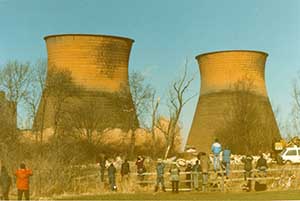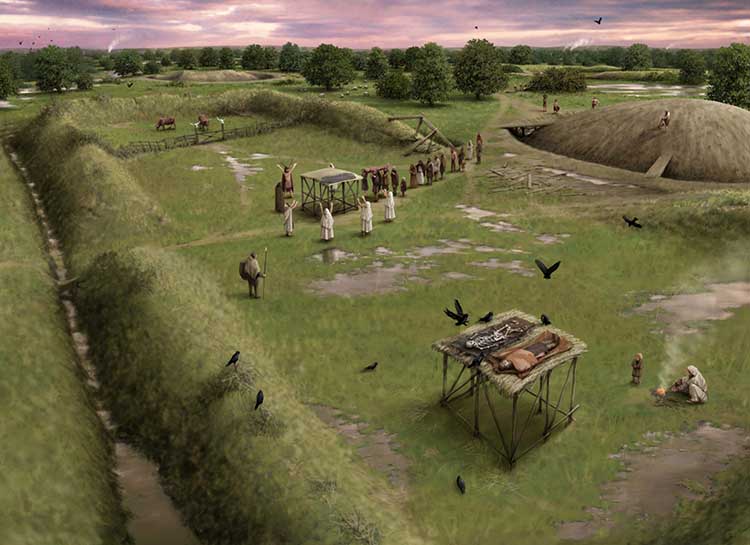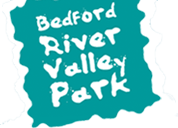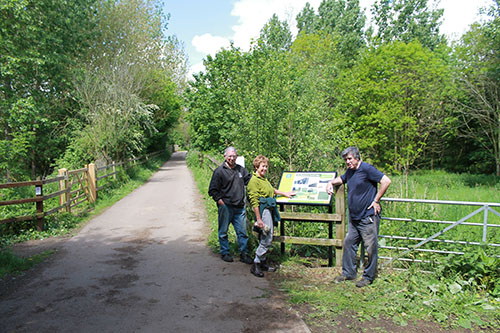Time flies when you’er having fun and the Bedford River Valley Park volunteers have certainly been busy installing information boards along with help from the Priory Rangers and the Community Payback Team.
So far 7 information boards have been installed between Bedford and Willington that in total cover a diverse range of historical time periods ranging from Mesolithic, Neolithic, Roman &Tudor landscapes to the industrial revolution, the River Great Ouse highway and the introduction of the Oxford to Cambridge railway. The Heritage Lottery funded project has also covered more recent history by including a panel on the Goldington power station that was demolished in the1980’s.
Nearly all the information boards can be accessed by visiting Priory Country Park and via the Bedford to Sandy Cycleway (Sustrans Route 51) so why not take a walk or hop on your bike and go explore.

The Goldington Power Station Demolition experts tumbled Goldington’s cooling towers in 1986. Photograph courtesy of Andy Croft.
The Team are currently working on the oral history project to interpret BRVP’s rich heritage as well as new leaflet and geocache trail so watch this space.
For more information on this project or any other matter involving the Bedford River Valley Park then please contact Darren Woodward on: 01234 762603 or email: darren.woodward@marstonvale.org

An artists impression of Bedford’s most important Neolithic mortuary areas. Communities gathered here for important ceremonies over 4,500 years ago to lay out the recently deceased to the elements. Later generations built circular mounds beside the Neolithic mortuary grounds. Archaeologists still don’t know what the mounds were for but examples elsewhere suggest that many were used for the burial of high-status individuals in the Bronze Age.


Leave a Reply